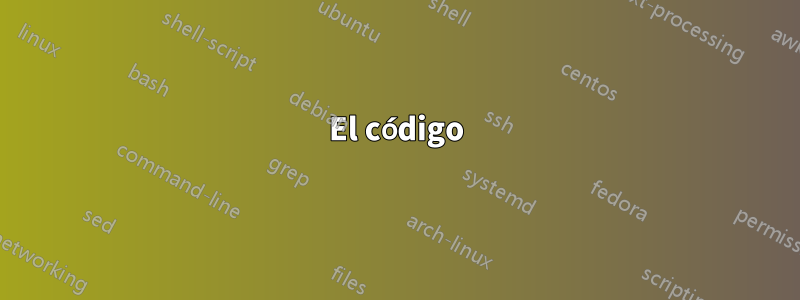
Quiero una ecuación de varias líneas (preferiblemente incluso centrada con la columna apropiada, ya que las ecuaciones de una sola línea que ya tengo usando [y] o $$ $$ no están centradas) en parte de la descripción de \newglossaryentry.
Básicamente quiero, centradas en la columna del glosario, ecuaciones de una sola línea y de varias líneas.
¡Gracias!
PD: pensé que podría sacar algo de esto:ingrese la descripción del enlace aquí pero no pude...
\documentclass[twoside]{amsbook}
\usepackage[colorlinks]{hyperref}
\usepackage[xindy,counter=section,sanitize={name=false},style=index]{glossaries} %[toc]% %\glstoctrue
\usepackage{nomencl}
\makeglossaries %has to be after \usepackage{hyperref}
%
\glossarystyle{long3col}
%\glossarystyle{super3col}
\setlength{\glsdescwidth}{0.6\textwidth}
\setlength{\glspagelistwidth}{0.15\textwidth}
\newglossaryentry{AffineVariety}
{
name=Affine Variety,
description={Affine varieties are defined to be anything that looks like the set of common zeros of a collection of polynomials. E.g., $A = \mathbb{C}[X]$ is the ring of polynomials in $X$ with complex coefficients. Let $f=X-1 \in A$ and its set of zeros, $Z(\{f\})=\{1\}$ is an example of an affine variety.}
}
\newglossaryentry{RemovableSingularity}
{
name=Removable Singularity,
description={Formally, if $U \subset \mathbb{C}$ is an open subset of the complex plane $\mathbb{C}$, and $a \in U$, and $f: U\backslash\{a\} \to \mathbb{C}$ a holmorphic function, then $a$ is a removable singularity for $f$ if there exists a holomorphic function $g: U \to \mathbb{C}$, coinciding with $f$ on $U\backslash\{a\}$. It is said that $f$ is holomorphically extended over $U$ if such a $g$ exists. A simple example is the function $$f(z) = \frac{\sin(z)}{z}$$ at $z=0$ (even this: \[f(z) = \frac{\sin(z)}{z}\] doesn't center.). The singularity, due to the indeterminate form, can be removed by defining $f(0)=1$, which is the limit of $f$ as $z$ approaches zero.}
}
\newglossaryentry{TetrahedralCoordinates}
{
name=Tetrahedral Coordinates,
description={Coordinates useful in plotting projective three-dimensional curves of the form $f(x_0,x_1,x_2,x_3)=0$, which are defined by
% \begin{minipage}[t][5cm][b]{0,5\textwidth}
% \ensuremath{
% $$ {\setlength\arraycolsep{0.2em} \begin{eqnarray} x_0 = 1-z-\sqrt{2}\,x \\ x_1 = 1 - z + \sqrt{2}\,x \\ x_2 = 1+ z+ \sqrt{2}\,y \\ x_3 = 1 + z - \sqrt{2}\,y \end{eqnarray} } $$
% \end{minipage}
% }
}
}
\makeglossaries
\begin{document}
Consider the equation
\begin{equation}
e = m * c^2
\end{equation}
in which \gls{AffineVariety} is here, but not here \gls{TetrahedralCoordinates} oh and this \gls{RemovableSingularity}.
\printglossary
\end{document}
Respuesta1
Envolver el contenido en un minipageentorno permite que las matemáticas mostradas se centren en el longtableentorno. Pero hacer eso cada vez sería tedioso, inflexible y propenso a errores.
Una mejor opción es usar el \newcolumntypecomando del arraypaquete para configurar un nuevo tipo de columna para entornos tabulares que luego podemos usar para definir un nuevo estilo de glosario my3col. Este estilo se basará en long3colel tipo de columna de la descripción, pero con un cambio.
Lo cargué glossariesanteriormente para que \glsdescwidthesté disponible cuando se defina el nuevo tipo de columna. Esto a su vez se define antes de configurar el nuevo estilo de glosario que hará uso del mismo. Finalmente, se activa el nuevo estilo.
El código
\documentclass[twoside]{amsbook}
\usepackage[colorlinks]{hyperref}
\usepackage[xindy,counter=section,sanitize={name=false},style=index]{glossaries} %[toc]% %\glstoctrue
\usepackage{nomencl}
\setlength{\glsdescwidth}{0.6\textwidth}
\setlength{\glspagelistwidth}{0.15\textwidth}
\usepackage{array}
\newcolumntype{G}{% This is defining a new column type for tabulars which we will use to define the longtable environment in the new glossary style
>{\begin{minipage}[t]{\glsdescwidth}}{c}<{\end{minipage}}%
}
\newglossarystyle{my3col}{% call that style my3col
\setglossarystyle{long3col}% base it on long3col so we don't need to define the everything from scratch
\renewenvironment{theglossary}% here's the bit we want to alter
{\begin{longtable}{lGp{\glspagelistwidth}}}% just change the central column to our new column type, G
{\end{longtable}}}
\glossarystyle{my3col}% we want to use the new style!
\makeglossaries %has to be after \usepackage{hyperref}
\newglossaryentry{AffineVariety}
{
name=Affine Variety,
description={Affine varieties are defined to be anything that looks like the set of common zeros of a collection of polynomials. E.g., $A = \mathbb{C}[X]$ is the ring of polynomials in $X$ with complex coefficients. Let $f=X-1 \in A$ and its set of zeros, $Z(\{f\})=\{1\}$ is an example of an affine variety.}
}
\newglossaryentry{RemovableSingularity}
{
name=Removable Singularity,
description={Formally, if $U \subset \mathbb{C}$ is an open subset of the complex plane $\mathbb{C}$, and $a \in U$, and $f: U\backslash\{a\} \to \mathbb{C}$ a holmorphic function, then $a$ is a removable singularity for $f$ if there exists a holomorphic function $g: U \to \mathbb{C}$, coinciding with $f$ on $U\backslash\{a\}$. It is said that $f$ is holomorphically extended over $U$ if such a $g$ exists. A simple example is the function
\[f(z) = \frac{\sin(z)}{z}\]
at $z=0$ (even this:
\[f(z) = \frac{\sin(z)}{z}\]
doesn't center.). The singularity, due to the indeterminate form, can be removed by defining $f(0)=1$, which is the limit of $f$ as $z$ approaches zero.}
}
\newglossaryentry{TetrahedralCoordinates}
{
name=Tetrahedral Coordinates,
description={Coordinates useful in plotting projective three-dimensional curves of the form $f(x_0,x_1,x_2,x_3)=0$, which are defined by
\begin{gather*}
X_0 = 1-Z-\sqrt{2}\,X \\
X_1 = 1 - Z + \sqrt{2}\,X \\
X_2 = 1+ Z+ \sqrt{2}\,Y \\
X_3 = 1 + Z - \sqrt{2}\,Y
\end{gather*}
}
}
\begin{document}
Consider the equation
\begin{equation}
e = m * c^2
\end{equation}
in which \gls{AffineVariety} is here, but not here \gls{TetrahedralCoordinates} oh and this \gls{RemovableSingularity}.
\printglossary
\end{document}
La salida

Notas
- No es necesario
\makeglossariesdos veces en el preámbulo. $$...$$está en desuso y no debe usarse. Utilice\[...\], por ejemplo, en su lugar.


